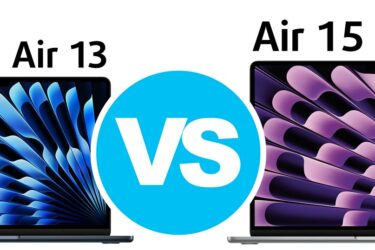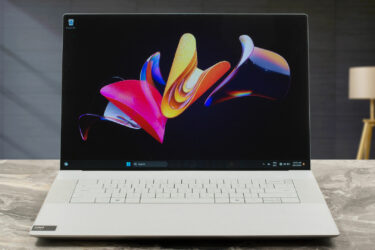Exynos 7880 (+Mali-T830 MP3) vs Exynos 7870 (+Mali-T830) vs Exynos 7420 (+Mali-T760MP8) – performance, benchmarks and temperatures
The time has come to confront other three popular chips developed by Samsung. This time the “stars” of this comparison are the mobile processors Exynos 7880, Exynos 7870 and Exynos 7420. They can be found in some of the most wanted models of the South Korean company – Samsung Galaxy А5 (2017), Samsung Galaxy А3 (2017) and Samsung Galaxy S6 respectively. In the sections below we will share information about each of the chips, compare their benchmark results, and finally conclude with surface overheating tests.
You can check the three models over here:
Samsung Galaxy А5 (2017): Price and availability / Detailed Review
Samsung Galaxy А3 (2017): Price and availability / Detailed Review
Samsung Galaxy S6: Price and availability / Detailed Review
| Specs sheet | Exynos 7880 | Exynos 7870 | Exynos 7420 |
|---|---|---|---|
| Process | 14nm FinFET | 14nm FinFET | 14nm FinFET |
| Cores | 8 | 8 | 8 |
| Frequency | 1.9GHz | 1.6 GHz | up to 2.1 GHz |
| Architecture | Cortex-A53 / 64-bit support | Cortex-A53 / 64-bit support | ARM big.LITTLE – Cortex-A53 & Cortex-A57 / 64-bit support |
| GPU | Mali-T830 MP3 | Mali-T830 | Mali-T760MP8 |
We start off with Exynos 7880, which is a 64-bit mobile processor developed by Samsung. It can be found in the smartphone Samsung Galaxy А5 (2017). The chip is manufactured through a 14nm technological process and features eight Cortex-A53 cores running at a frequency of 1.9 GHz. Its specs sheet is complemented by LTE Cat 7 connectivity with a download speed of up to 300Mbps, support for screens with resolution of up to 2560 х 1440 pixels, up to 21.7MP cameras and 4K video recording and playback at 30fps. The available GPU here is Mali-T830 MP3.
You can find more information about Exynos 7880 on the official Samsung website.
The next chip of this comparison is Exynos 7870 – available in the smartphone Samsung Galaxy А3 (2017). This is a 64-bit mobile processor that features 8 Cortex-A53 cores running at a frequency of 1.6 GHz. It is manufactured through a 14nm technological process. Among the specifications of the chip stand out LTE Cat 6 connectivity with a download speed of up to 300Mbps, support for Full HD screens, up to 16MP cameras and Full HD video recording at 60fps.
You can find more information about Exynos 7870 on the official Samsung website.
And last but certainly not least – Exynos 7420. The 64-bit processor can be found in Samsung Galaxy S6. This is the first mobile chip which uses a 14-nm-FinFET-SoC LPE process, available in a smartphone. It features eight cores – four Cortex-A53 cores working at 1.5 GHz and four 2.1GHz Cortex-A57 cores. The specs sheet is complemented by LTE Cat 16 support which will ensure download speeds of up to 450Mbps and upload speeds of up to 50Mbps. Here, the Mali-T760MP8 GPU takes care of the graphics performance.
You can find more information about Exynos 7870 on the official Samsung website.
Benchmark results
We put to the test the computing as well as graphics power of the three mobile processors using several benchmark test, the results of which you can see in the table below.
| Benchmarks | Exynos 7880 | Exynos 7870 | Exynos 7420 |
|---|---|---|---|
| Geekbench 3 (Multi-Core) | 4113 | 3598 | 4604 |
| Vellamo 3 Metal | 1370 | 1153 | 2678 |
| GFXBench 2.7 T-Rex (offscreen) | 34 | 12 | 59 |
| GFXBench 3 Manhattan (offscreen) | 15 | 5.1 | 26 |
| GFXBench 3.1 Manhattan (offscreen) | 9.1 | 3.2 | – |
| 3D Mark Ice Unlimited | 13540 | 8564 | 21662 |
External temperatures
Apart from performance, we also tested the three chips for potential overheating issues after several hours of extended 3D gaming with the help of the Epic Citadel app. Immediately after this, we measured the temperatures in three sections of the smartphone’s back taking into account only the highest values. In all three cases, the temperature didn’t reach particularly worrying values but in Samsung Galaxy S6 the results were slightly higher compared to the other two mobile devices. The photos below display the registered temperatures in the three sections of each smartphone’s back.
You can find out where the three smartphones are positioned in our graphics and computing power rankings.
What’s more, you can check the three models over here:
Samsung Galaxy А5 (2017): Price and availability / Detailed Review
Samsung Galaxy А3 (2017): Price and availability / Detailed Review
Samsung Galaxy S6: Price and availability / Detailed Review














